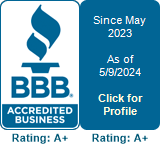TPO Roofing System
Commercial Roofing TPO: A Comprehensive Guide
TPO, or Thermoplastic Olefin, is a popular roofing material used in commercial and industrial buildings. Known for its durability, versatility, and energy efficiency, TPO roofing has become a go-to choice for many businesses looking to upgrade their roofing system. In this blog, we'll take a comprehensive look at what TPO roofing is, its benefits, and its drawbacks, as well as its installation process and maintenance requirements.
What is TPO Roofing?
TPO roofing is a single-ply roofing membrane made from a blend of polypropylene and ethylene-propylene rubber. It is designed to withstand harsh weather conditions and provide long-lasting protection to commercial buildings. TPO roofing systems come in various colors, thicknesses, and sizes, making it easy to find the right one for your specific needs.
Benefits of TPO Roofing
TPO roofing installation is best left to professional roofing contractors, who have the necessary experience and expertise to get the job done right. The installation process involves the following steps:
TPO roofing requires minimal maintenance, but it is important to perform routine inspections to ensure it remains in good condition. The following are some of the maintenance tasks that should be performed:
TPO, or Thermoplastic Olefin, is a popular roofing material used in commercial and industrial buildings. Known for its durability, versatility, and energy efficiency, TPO roofing has become a go-to choice for many businesses looking to upgrade their roofing system. In this blog, we'll take a comprehensive look at what TPO roofing is, its benefits, and its drawbacks, as well as its installation process and maintenance requirements.
What is TPO Roofing?
TPO roofing is a single-ply roofing membrane made from a blend of polypropylene and ethylene-propylene rubber. It is designed to withstand harsh weather conditions and provide long-lasting protection to commercial buildings. TPO roofing systems come in various colors, thicknesses, and sizes, making it easy to find the right one for your specific needs.
Benefits of TPO Roofing
- Energy Efficiency: TPO roofing is highly reflective, which helps to reduce the amount of heat absorbed by your building, lowering your energy costs and improving your indoor comfort.
- Durability: TPO roofing is resistant to punctures, tears, and other physical damage, making it an ideal choice for commercial buildings that experience heavy foot traffic and equipment movement.
- UV Resistant: TPO roofing is designed to withstand the damaging effects of UV radiation, ensuring your roof lasts longer and retains its appearance.
- Environmentally Friendly: TPO roofing is made from a recyclable material and is free of toxic chemicals, making it an environmentally responsible choice.
- High Installation Costs: TPO roofing is more expensive to install compared to other roofing materials, making it a less budget-friendly option for some businesses.
- Limited Warranty: TPO roofing systems typically come with a limited warranty, which can make it less appealing for some businesses who want a longer-lasting roofing solution.
- Chemical Sensitivity: TPO roofing is sensitive to certain chemicals, such as oil and grease, which can cause staining and discoloration if not properly cleaned.
TPO roofing installation is best left to professional roofing contractors, who have the necessary experience and expertise to get the job done right. The installation process involves the following steps:
- Surface Preparation: The roof deck must be cleaned and repaired as needed before the TPO roofing is installed.
- Insulation: Insulation is added to the roof deck to improve energy efficiency and comfort.
- Membrane Installation: The TPO membrane is unrolled and adhered to the roof deck using specialized adhesives and fasteners.
- Seaming: The TPO membrane is heat welded to create a seamless and waterproof surface.
TPO roofing requires minimal maintenance, but it is important to perform routine inspections to ensure it remains in good condition. The following are some of the maintenance tasks that should be performed:
- Inspect for Damages: Regularly inspect the roof for punctures, tears, and other physical damages, and repair as needed.
- Clean Regularly: Clean the roof regularly to remove dirt, debris, and other contaminants that can cause staining and discoloration.
- Monitor Fasteners: Monitor the fasteners to ensure they are secure and not causing any leaks.
|
Mailing Address: 2770 Main St., Ste. 168, Frisco, TX 75034
Dallas Location: 2730 N Stemmons Fwy #415, Dallas, TX 75207 |
Copyright 2018 © Roofing Giant ® All rights reserved. Roofing Giant ® is a registered trademark and is the property of Construction Giant, Inc. Do not use our trademark without a written permission from Construction Giant, Inc.
By Roofing Giant | Dallas Roofing Company | Dallas Roofing Contractor | Dallas Roofer | Privacy Policy | Terms of Use |
By Roofing Giant | Dallas Roofing Company | Dallas Roofing Contractor | Dallas Roofer | Privacy Policy | Terms of Use |




